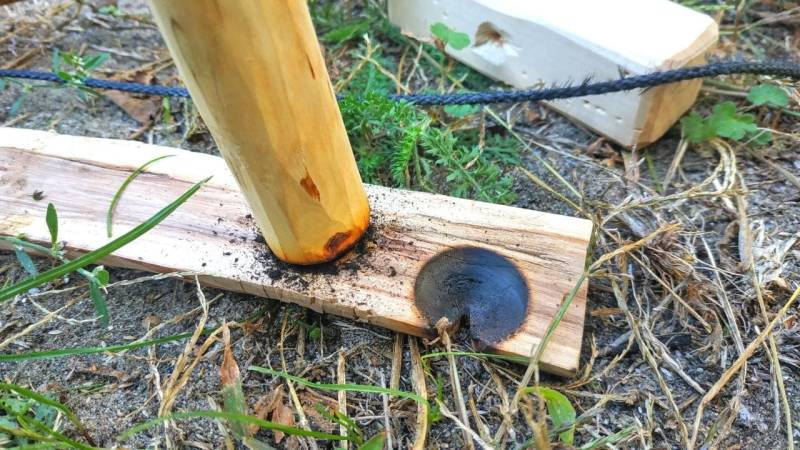
What wood for the bow drill? Choose the best wood for your bow drill (+free construction manual)
👉 The key facts from this guide
- The selection of the right wood is crucial for successfully igniting a fire with a bow drill. Soft woods such as willow, poplar, lime, larch, and aspen are particularly suitable.
- The wood should be dry to generate effective friction heat. Green, living wood should be avoided.
- Soft and lightweight woods are preferred as they can be easily worn down and generate friction heat more quickly.
- Although hard woods can also work, they require more strength and endurance and are therefore less suitable for beginners.
- If no dead wood is available, green wood can be collected and dried before use.
What if you could create a thick, juicy ember with your bow drill in just 30 seconds?
Actually, that's possible - even for beginners. It all depends on using the right wood. I've been using this type of wood for years, and it allows me to create a fantastic ember in no time at all.
And the best part? You can do it too.
It's not as complicated as some people make it out to be.
In just 5 minutes, I can show you what the best wood for a bow drill is and how to find it.
Finally, start your fire without sweat and frustration.
Let's get started.
With the Right Wood, You'll Save Time, Frustration, and Sweat
I remember the early days of my bow drill career.
I gathered wood from the forest, read guides, and watched YouTube videos.
Most of my attempts using the bow drill failed miserably. I sweated, I got nervous, I kept slipping.
At the end of the day, after 7 attempts, I angrily threw the hearth board and spindle into the corner.
They lay there for 2.5 months until I picked them up again.
The whole ordeal repeated itself three more times. Once, I managed to create a steady ember. The next 9 times, it failed again.
I was disappointed, but my bow drill technique was spot on.
And then I read a book by Ray Mears. It said:
"The key to successful bow drilling is choosing the right wood for the hearth board and the spindle."
- Ray Mears
So I searched for recommended wood for the spindle and hearth board.
And suddenly the successes came in jerks. Throwing one big fat ember (DFG) after another. Take a look at the picture here and you'll see what I mean.
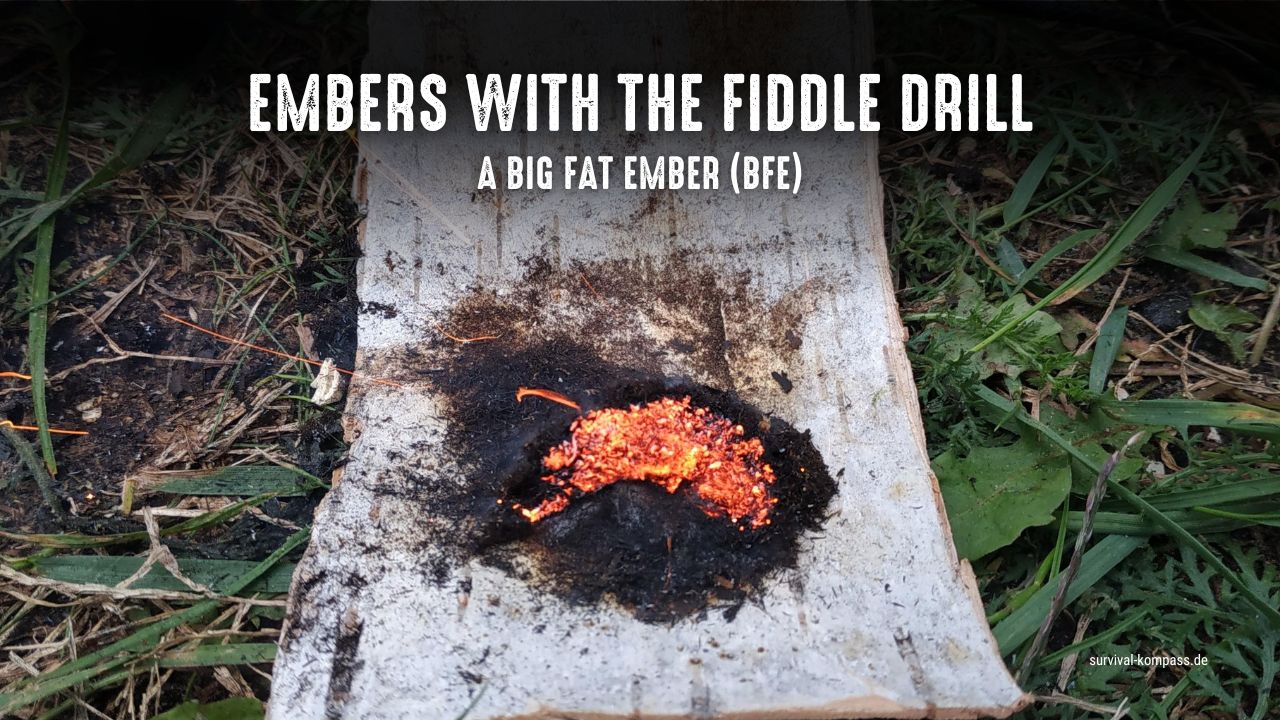
Today, I've perfected my technique and with the right wood, I can create a fire in just a few seconds.
Here's proof:
One thing should be clear to you: Anyone can create a fire with a bow drill. Just use the experience you find here.
The basics of bow drilling, such as technique and the parts of your set, can be found in my article "What is a bow drill?". This guide will only deal with the wood.
But just to remind you, here's what a bow drill is and how it's constructed.
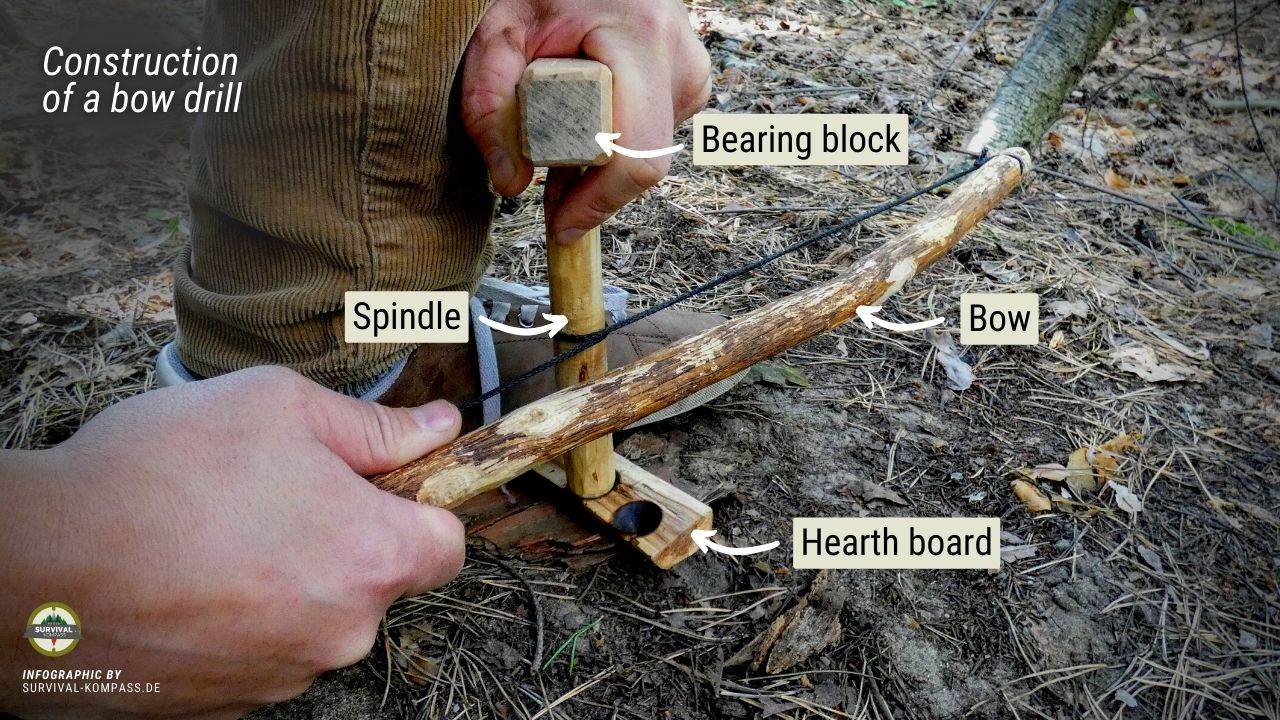
What's the best wood for bow drilling?
I would rather not keep you waiting, so here are my recommendations for the best wood for spindle and fireboard:
Basically, almost all types of wood are suitable for bow drilling. If you want to quickly, easily, and without much effort create an ember with a bow drill, the best options are softwoods like willow, poplar, lime, larch, and aspen.
And the fact is: Exactly these softwoods are also recommended by Ray Mears, Rüdiger Nehberg, and Dave Canterburry (here are good books by them).
There are many other woods that also work for spindle and hearth board.
Here's the list: Alder, Baobab, Birch, Cedar, Cherry Root, Clematis, Cypress, Elderberry, Elm, Balsam Fir, Hazelnut, Hibiscus, Horse Chestnut, Ivy, Juniper, Field Maple, Maple, Marula, Oak, Pine, Wild Rose, Spruce, Mountain Maple or Yucca.
Combinations like hazel and poplar also work well. For the bearing block, it's better to use a hard wood, such as oak or beech.
Below, I'll introduce you to the best woods mentioned above. But first, let's take a look at the basics of wood.
What does "best" wood mean for the bow drill?
The selection of the best wood for your bow drill set is crucial for success.
Even if everything else is PERFECT, choosing the wrong wood will likely lead to failure. This happens regularly, especially with beginners.
In this article, the best trees in Germany will be introduced that can be used for carving the spindle and hearth board of your bow drill.
Before we look at specific species, let's first take a look at some basic wood properties.
Dry
If your wood isn't bone dry, you won't be able to ignite it with your bow drill.
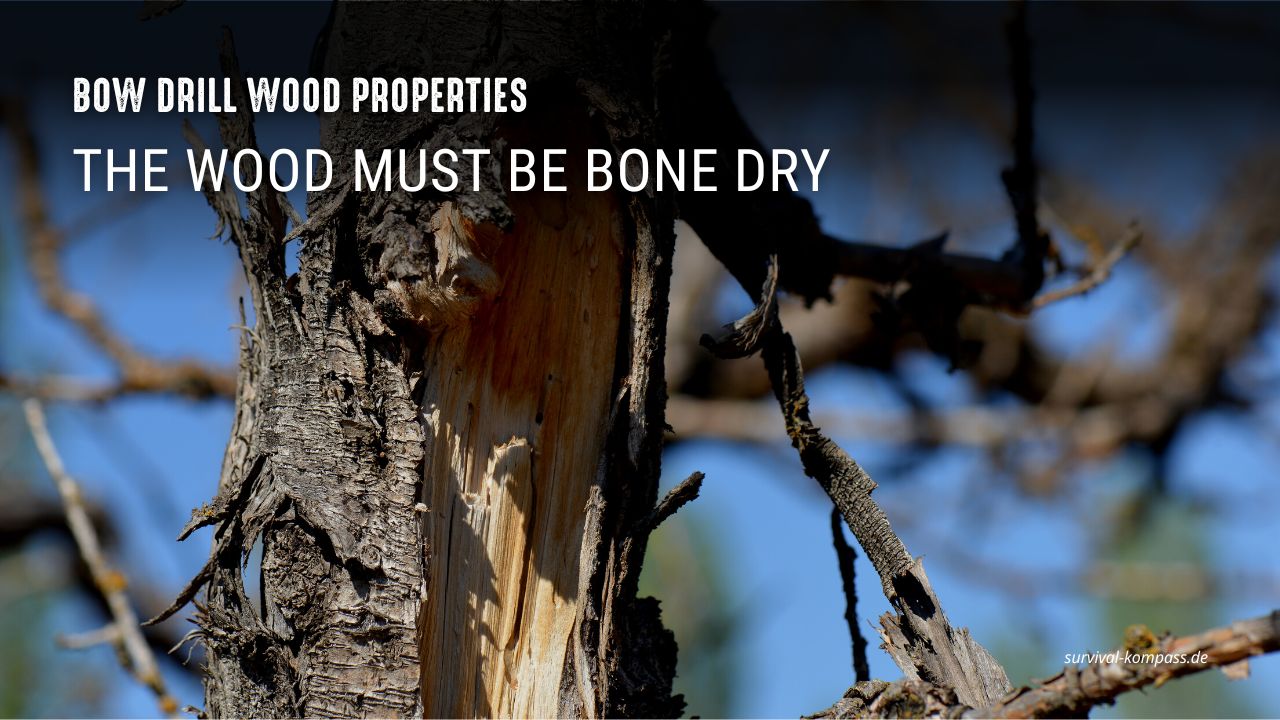
A coal can only be created when there is no moisture present. For this reason, you should never use live green wood for the spindle or the hearth board.
It is better not to collect wood from the ground as it is usually more moist than dead wood that is still hanging from a tree. Wind and sun have dried out the wood while it was on the tree.
Pro Tip: Sometimes it can be difficult to tell if a piece of wood is dry enough by touch alone. I've found that using my lips, cheeks, and chin are more reliable than my fingertips. This method helps me to feel if the wood is completely dry.
Types of Wood
Although I have successfully used many types of wood for spindle and hearth board when bow drilling, certain species work best.
There are certain types of wood that are ideal for carving excellent spindles and hearth boards. However, you must learn to recognize the different types of wood first.
Soft and lightweight woods are preferred over heavy and hard varieties. Soft doesn't mean you should look for punk wood, though. The wood should be solid.
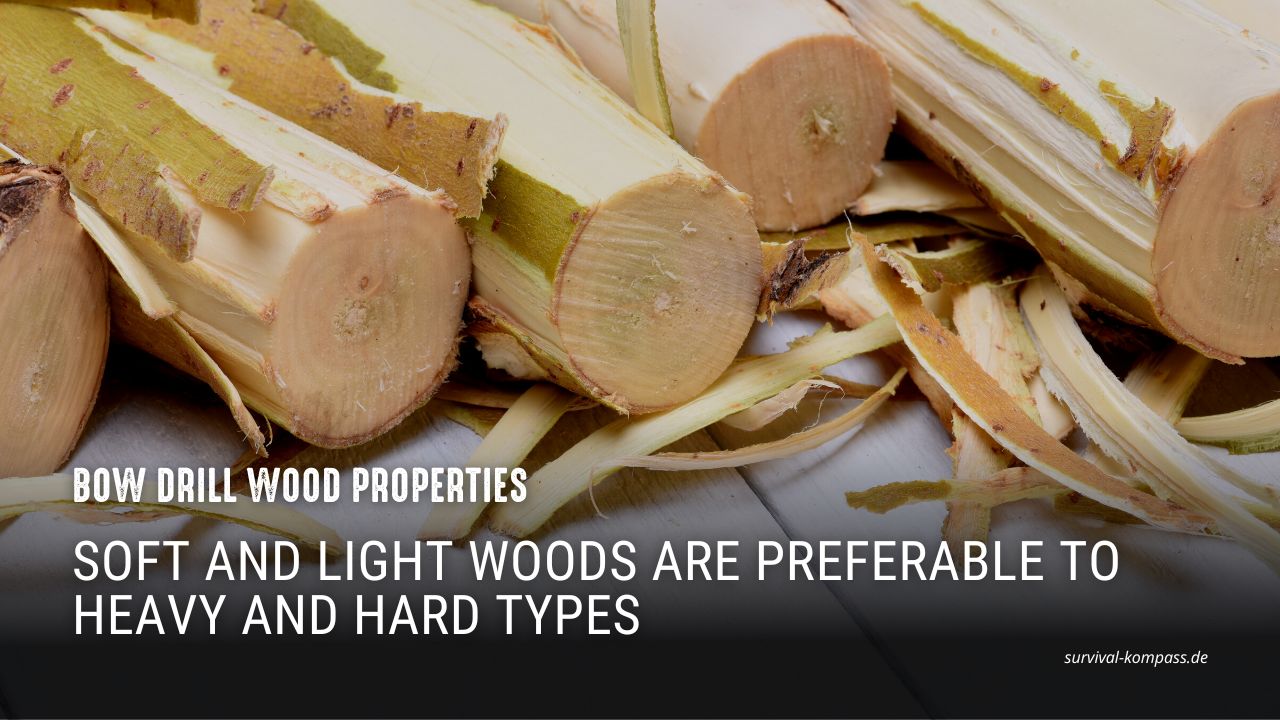
You may already know the rule of thumb: press your fingernail lightly into the wood. If it leaves an impression, it's probably a soft wood.
The best way to go about it is with thin branches and young saplings. Branches and saplings grow faster than a thick trunk. This makes the wood structure lighter and easier to create a quick ember with.
And your wood should be as straight as possible and free of knots or cracks.
So remember: the faster the tree grows, the better it is suited for your bow drill. For example, a one-year-old sapling is a fantastic choice.
Pro-tip: I recommend using the same type of wood for both the spindle and the hearth board. This has brought me my greatest successes. Ideally, both parts should be made from the same piece of wood.
Why hardwoods are not ideal - but still work
As I mentioned before, it's much easier to create an ember with softwood.
But why?
It's because hardwoods have a higher density (mass per unit volume, g/cm³) than softwoods. The ratio of cell wall substance to cavity in wood is higher in hard woods.
- Hardwood: lots of cell wall substance, few cavities
- Softwood: little cell wall substance, many cavities
Here's a graphic to help you understand:
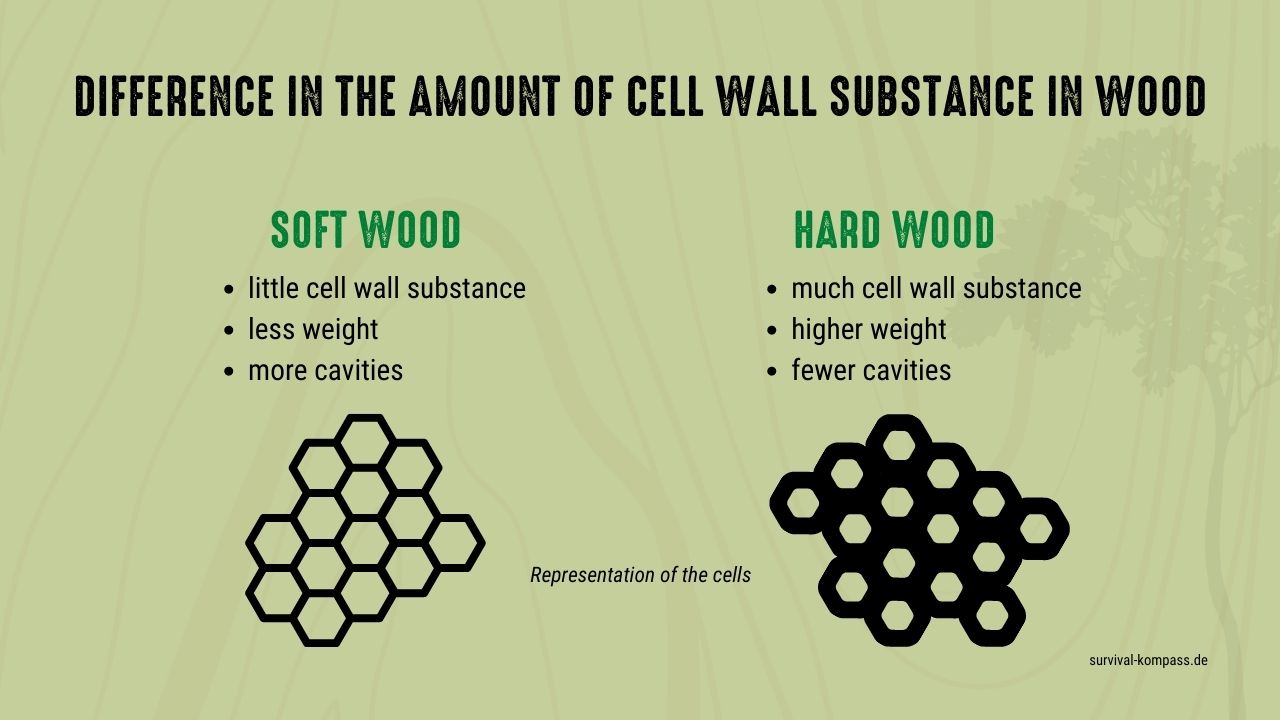
It's easier to understand with an example:
You have two wooden cubes that are 1 x 1 x 1 cm in length, width, and height (1 cm³) in front of you. One cube is made of spruce and the other is made of oak. The spruce cube weighs 0.46 grams and the oak cube weighs 0.87 grams. The difference lies in the amount of cell wall substance. Oak, being a hardwood, has more cell wall substance and therefore weighs more.
The insight from this?
Wood with a low cell wall structure (light wood) has less mass and the wood's cell structure can be easily removed with a drill, thus creating friction heat more quickly.
Here's an example:
Imagine your best hearth board and your best spindle that can create embers with minimal effort. The wood will be feather-light. Now, place your hearth board and spindle in a vice and compress the wood to half its original thickness. It will be twice as dense. You can still create an ember with it, but you will have to work twice as hard because you have changed the structure of the wood. You now need twice as much physical strength to create an ember.
This means that individuals with little strength and endurance will have a hard time creating embers with hard wood. More friction and pressure are required.
Additionally, hardwoods seem more susceptible to glazing, making it more difficult to create an ember.
Therefore, it is crucial – especially for beginners – to use soft wood.
Drying Green Wood
You may know the right type of wood, but can't find any dead wood of that kind. In that case, you can use live and green wood.
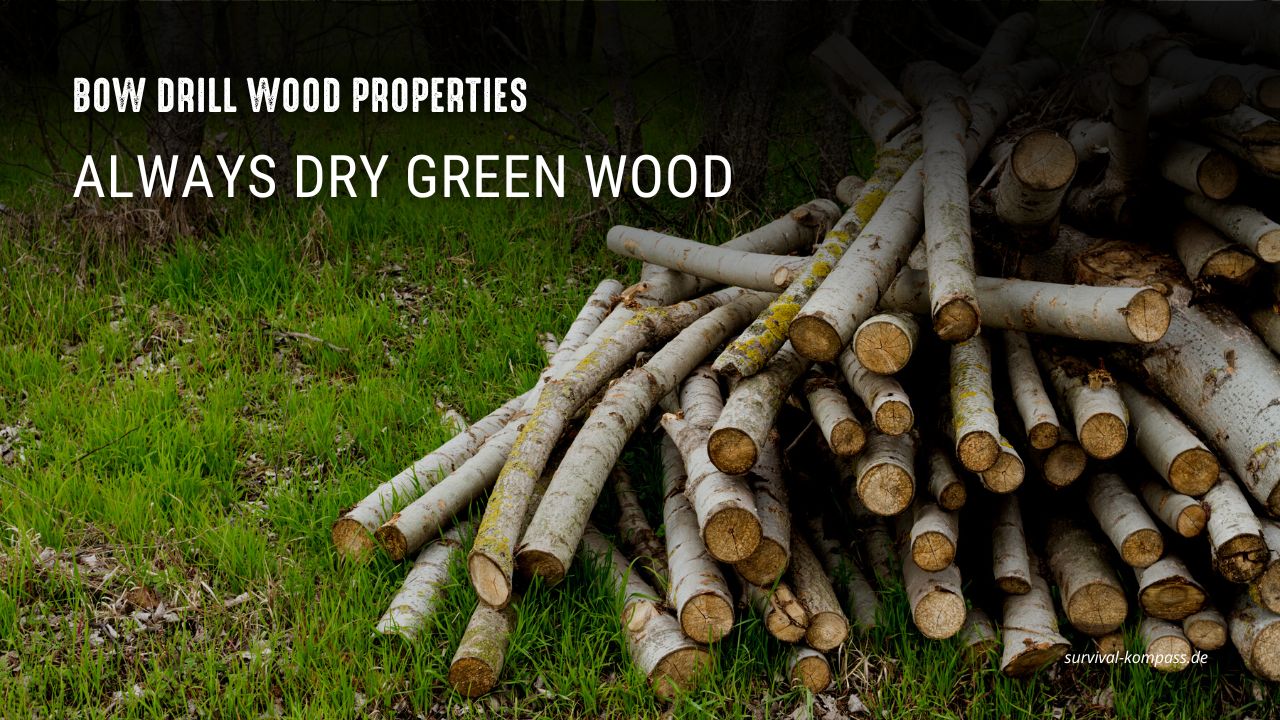
For the bow drill, find a branch or sapling that is about as thick as your wrist and about 40 to 50 cm long. Then split the branch in half and let it dry for at least a week. Best on the windowsill in the sun or on your heater in the cold season.
Pro-tip: If time allows, you should always dry your new bow drill set before using it. That way, you can be sure your wood is bone dry.
I will mention the Brinell hardness of different types of wood. The Brinell hardness indicates how hard a type of wood is. Bear in mind, however, that the Brinell hardness can vary greatly depending on the location where it is measured: axial, tangential, or longitudinal. Depending on the orientation of the wood, the Brinell hardness can vary significantly. If you are keen to know more, I recommend this database for wood values.
Best bow drill wood: Willow
Most survival and bushcraft experts recommend willow wood for the bow drill, as willow wood is soft (Brinell hardness: 19).
There are hundreds of willow species all over the world, and for many, it's the best wood for the bow drill.
With willow wood, I was almost always successful. I remember my first piece of willow wood well. I collected it from the ground and it was damp. Right after collecting it, I carved a hearth board and spindle and dried it at home. 24 hours later, I created a fantastic ember with it on my first try.
Willows love water and grow in all temperate regions of the world (e.g., Europe, Russia, and North America). You can find them in almost every roadside ditch, along rivers, and at the edges of ponds.
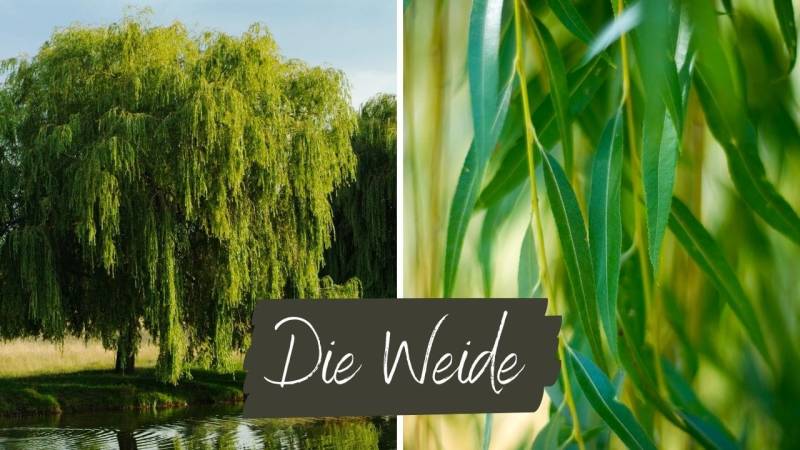
Interestingly, if you cut a living willow twig from the tree and stick it in the ground, it will likely root and grow into its tree. With this method, you can easily plant willows in your garden.
Willow leaves are typically long and narrow. They are widest in the middle and taper to a point at both ends. The leaf edges are finely serrated. The top of the leaf is light green and the bottom is often pale green. This gives many willows their silvery appearance from a distance.
Best bow drill wood: Poplar
Poplar wood is soft (Brinell hardness 20-21) and light, making it fabulous for generating ember by friction heat. Some experts even claim that it is the only true wood for bow drilling.
Poplar trees have a triangular leaf with serrated edges. The bark of old trees is deeply furrowed. Poplars, like lindens, primarily grow near water.
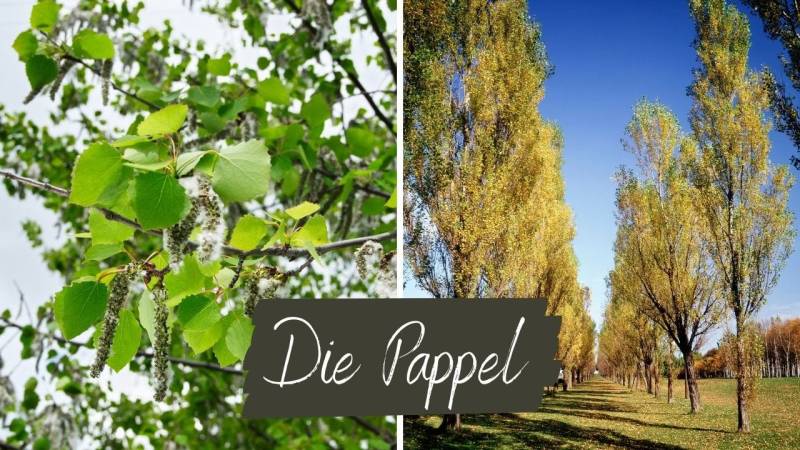
Poplars grow rapidly - almost too quickly for their own good. The soft wood and fast growth lead to weak branches. Dead and broken branches are almost always found under large poplars. Therefore, you should never set up your bushcraft camp under a poplar tree.
If you are looking for firewood or material for your spindle and your hearth board for your bow drill, you will definitely find it under a poplar tree.
Years ago, I created my first thick ember with poplar wood. I still remember the day because I was practicing again in my study. In the end, I received strange looks from my wife because the whole house smelled like burnt wood.
Best bow drill wood: Lime tree
Except for balsa wood, I know of no softer wood than that of the lime tree (Brinell hardness of 16). Lime wood is therefore very popular among carvers because it is so easy to work with.
That is why it is one of the best woods for the bow drill. Except for extreme climatic zones, linden trees grow in most parts of the Northern Hemisphere.
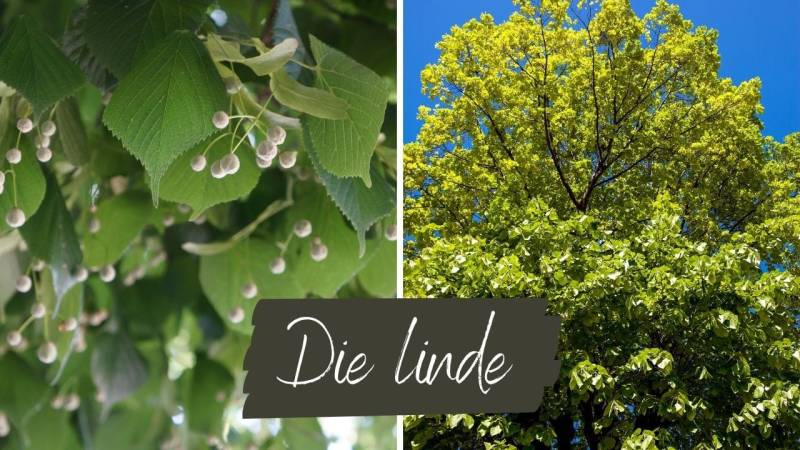
The lime tree grows well near water. The leaves of the lime tree are heart-shaped and almost always asymmetrical. They have a small, pea-shaped fruit hanging from a tongue-shaped bract. Young, tender lime leaves can be eaten without any concerns. They belong in every good wild salad.
The English call the lime tree "basswood" and the word "bass" comes from "bast", which means "fiber". Bast is the living tissue under the bark of trees.
And these inner bark fibers are an excellent material for making ropes. In extreme emergencies, you can also make your bowstring for your bow drill from the fibers of the lime tree inner bark.
Read also
Which cord for the bow drill? - How to choose the right bow drill cord (comprehensive list of cord types) – Discover the best cords for the bow drill. Compare different cords and find the optimal cord for your next outdoor adventure.
I still remember the first time I had lime wood in my hand. It was light, soft, and wonderfully easy to carve with a knife. Later, I discovered that it was perfect for bow drilling.
You can use lime wood of any age for your drill, although young trees are better. These trees are fresh and green, but it is worth drying them out.
The fibers from these young trees are more airy compared to wood you take from a larger tree. If you find a standing and dead young lime tree, consider yourself lucky. Alternatively, take low-hanging branches from a large lime tree.
Best bow drill wood: Aspen
The aspen or trembling aspen (Populus tremula) is a species of poplar (Populus). Its wood is also soft (Brinell hardness 21) and is popular among bow drill enthusiasts.
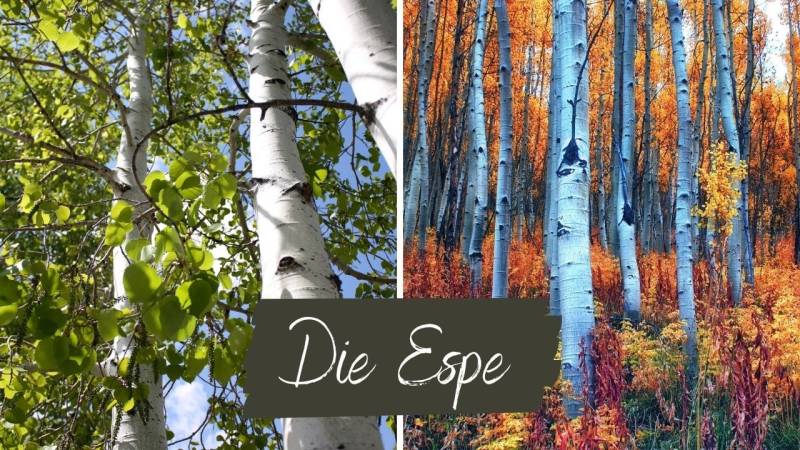
Just like other types of poplar, the aspen is one of the fastest growing trees. It has an average lifespan of about 100 years, with the tree being fully grown at 60 years old.
And did you know that the aspen contains compounds of salicylic acid? Salicylic acid has pain-relieving, anti-inflammatory, and fever-reducing properties.
You can use the bark, leaves, and shoot tips of the aspen for this. The active ingredient is also found in willow bark – as the physician and scholar Hippocrates already knew.
Best wood for the bow drill: Carve your first bow drill set
Selecting the right wood is one thing to create a thick ember. But you also need to carve your bow drill set properly. I'm referring to the spindle, the hearth board, and the bearing block.
To ensure you're on the right track, I'd like to introduce you to my bow drill set building instructions. You can use the template for free.
Just enter your email address below, so I know where to send it.
And if you're still trying it out yourself, and it doesn't really work, then take a look at my detailed guide "Frequent reasons why the bow drill fails and what solutions there are".


Author of the guide
Martin Gebhardt
Hey, I'm Martin. On my blog, you will learn the basics and numerous details about living in the wild. I think survival, bushcraft and the good life in nature are the keys to happiness. Find me here on Instagram or on YouTube. You can find more about my mission on the About Me page.
Was this guide helpful?
39 people found this guide helpful.
4.90 out of 5 points (40 Ratings)
Comments (0)
This post may contain affiliate links. So if you click on the links and make a purchase, I will receive a small commission at no additional cost to you. Click here, to learn more about it.


